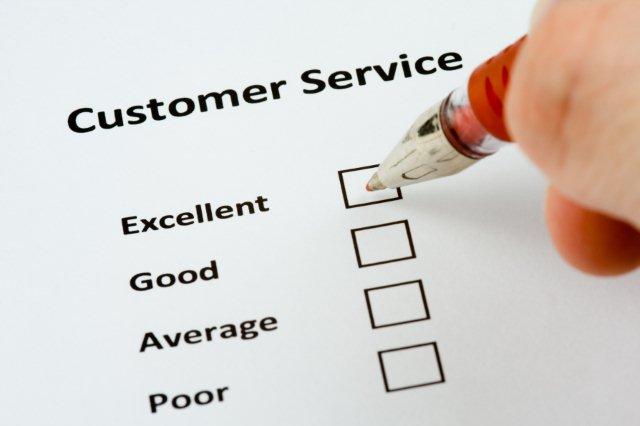Avoid losing customers to competitors
Many times you hear a salesperson say, “We service the heck out of our customers. They’ll never leave us.” But then a competitor walks away with an account. No one saw it coming or what went wrong.
October 11, 2018

You work hard getting new accounts, take servicing them seriously, and yet they still leave. Why? Think about it this way: You buy a new car—it’s just what you wanted. But after a year or so, you start thinking about the new models. That’s when little things about your current car start bugging you—it doesn’t have this-or-that, there’s a squeak, the technology is outdated. Before you know it, you’re back in the showroom.
It’s no different with customers. When competitors come calling, they’re ripe for the picking. All of a sudden, the list of little things that fester over time gets longer. Before you know it, you’re sacked, replaced by a competitor. It’s the accumulation of seemingly minor issues that do the damage and make customers vulnerable. To help avoid it happening, here’s a check-list for keeping customers:
1. Be irritation aware. By themselves little things accumulate in a customer’s mind, tolerated and quietly dormant until something triggers a reaction. “I’ll call you back about that,” but you forgot. “I’ll get on it right now,” but you didn’t. Minor irritations to be sure, but over time, they become a big issue. That’s when the competitor arrives.
2. Meet deadlines. “Sorry, Susan, would it be OK if I got that to you tomorrow?” although he knew the due date well in advance. If it happens once, that’s understandable. Twice and it’s seen as a pattern.
3. Exhibit self-confidence. Few things raise red flags faster than those who come across as wishy-washy and unsure of themselves. Surprising as it may seem, it can happen to people who take their work seriously and make a point of being thorough. Even so, their behavior can be interpreted as being doubtful and lacking in confidence.
4. Be a resource. Make it a practice to keep your antennae tuned for ideas that may be of interest to customers. Then, pass them along. It’s not only helpful but a way to let them know you’re thinking of them.
5. Become a better presenter. A regional rep for a steel company signed up for a public speaking class. “I’m not good enough on my feet,” he told the instructor. Months later, he received a big promotion and credited what he learned in the class as making the difference.
6. Get better organized. Smart salespeople know the value of being well organized. Intuitively, perhaps, they recognize that getting customers what they need fast helps being seen as reliable, someone they can count on.
7. Don’t talk about yourself. Understandably, salespeople want to impress prospects and customers. Sometimes they try too hard; they don’t do themselves any favors by telling stories about themselves. It’s not what customers want to hear.
8. Ask questions. How many times do we need to be reminded that “telling isn’t selling”? Yet, there are times when the urge is so strong, it gets out of control. Just remember, asking questions works better since it gives customers and prospects a chance to do what they know best: to talk about themselves and what they do.
9. Be attentive. Salespeople know the danger of ignoring customers and do everything possible to avoid it from happening. But some customers see it differently. What they notice are subtle changes in attentiveness: “Have we heard from Lurleen lately?” or “When was the last time Carl was in?” A picture begins to take shape. Once it starts, it sticks.
10. Be on time. Keeping customers waiting is dangerous at any time. Calling or texting you’ll be late doesn’t cut it. Some may think, it lets you off the hook, it doesn’t. Customers, including those who don’t say anything, may feel differently. Being late may be ignored, but it’s not forgotten.
11. Respond rapidly. Those expecting a response have their own perception of “quickly.” Not yours. It seems a bit tough, but a good rule of thumb is 15 minutes to one hour for responding to both phone calls and email. This includes simply letting someone know you received their message and when you will get back to them.
12. Anticipate problems. While optimism is essential if you’re in sales, it’s also useful to be bit pessimistic. It creates doubt, which will help you spot potential problems before disaster strikes. It’s better to be aware of what’s coming so you can correct it, while there’s still time.
13. Listen intently. We all find ourselves thinking, “What did I just read? I can’t remember a word!” Our eyes were moving across the page, but we were thinking about something else. It’s the same with listening, including sales situations. The customer is talking and we’re thinking about what we will to say next. All it takes to avoid this is to take a few notes, just enough to capture what the customer is saying. Besides getting the message, you will impress customers that you’re focused on them.
14. Write simply. The goal is to make everything you write as easy to read as possible. To do this, some suggest shooting for a 3rd grade reading level. Don’t laugh. It’s difficult, requiring skill to reach that level of clarity. However, a 5th to 7th grade level works well for capturing and holding attention. You can check your writing (memos, emails, white papers, proposals, etc.) using MS Word. Go to tools > spelling and grammar to see your scores. This article has a Flesch Readability Ease score of 66.8, fairly easy, along with a 6.8 grade level.
15. Express appreciation. Letting customers know you appreciate their business goes without saying—they like knowing you care. However, tickets to sporting events, gifts, meals at popular restaurants, or contributions to a customer’s favorite charity are thoughtful but weak substitutes for consistent top performance. That’s what justifies relationships.
So, what’s the best strategy for keeping encroaching competitors away from your customers. Simple, see above—1 through 15.
About the Author(s)
You May Also Like



